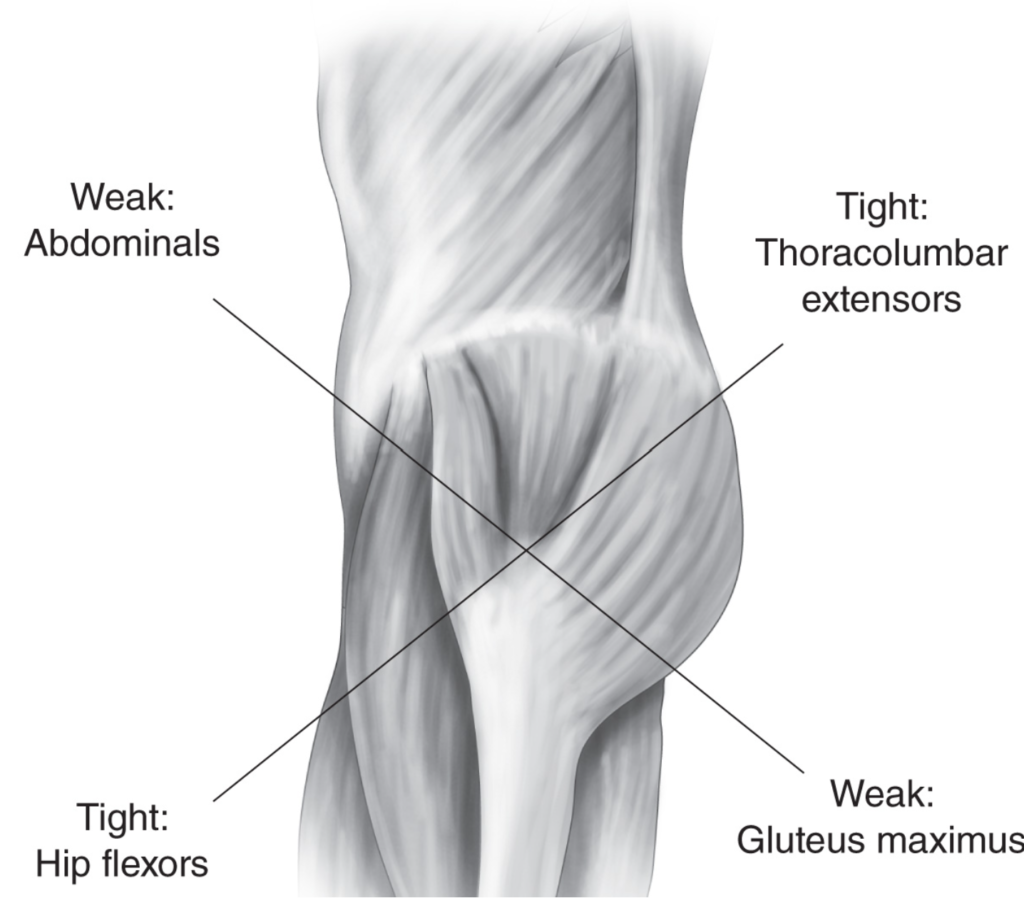Have you ever received the advice to “sit up straight”? Chances are it was likely in our younger years where we were slouched over, ostensibly putting undue strain on our backs by doing so. As we got older, the combination of a lot of sitting and a subconscious obsession with ergonomics may have further ingrained this presumed need to position our torsos in a certain way: upright. Does any of this sound familiar?
Unfortunately, many of us were never taught how to properly “sit up straight.” Consequently, it is possible that the way in which we’ve tried to accomplish this position has actually been the cause of more pain, all while not solving the underlying problem.
The TL;DR: chances are, lower back pain is caused by weak glutes and weak abdominals. Performing glute and abdominal exercises daily, such as outlined below, for 4-6 weeks may help alleviate much of this pain.
“Sitting Up Straight”
If you’re like me/most people, there is a fairly predictable movement pattern that follows the request to “sit up straight,” which may look a little something like this:

Source: Dr. Moramarco (drmoramarco.com)
By puffing our chest up and out and pulling our shoulders back, we achieve a more upright posture. However, the tendency is also to increase the inward curvature of our lower (lumbar) spine, as indicated by the dotted line. Our spine has a natural amount of inward curvature, but when this curvature is exaggerated, it is referred to as lordosis.
Lordosis –> Anterior Pelvic Tilt
When lordosis occurs, our body attempts to compensate to maintain stability. Specifically, our pelvis rotates forward and downward in what is called an anterior tilt. As a result of this anterior pelvic tilt, opposing muscles are stretched and contracted in a way that, over time, often leads to muscular imbalances and pain.

Source: Built With Science (builtwithscience.com)
Lower Crossed Syndrome
These muscular imbalances collectively are a condition referred to as lower crossed syndrome. Prolonged lordosis, sitting, or any other activity that promotes an anterior pelvic tilt will progressively tighten (from overactivity) and/or shorten muscles like the back extensors and hip flexors, while weakening (from inactivity) and/or lengthening opposing muscles like the glutes and abdominals. As a result of these muscle imbalances, lower back pain is the most common symptom that develops.

Source: Physio-Pedia.com
What To Do
By understanding the anatomy of why a lower back arch (lordosis) puts our body in a compromised position, we can better design the solution. Namely, we need to lengthen and strengthen the muscles that have been shortened and weakened.
What this looks like practically is performing exercises that promote a backward and upward (or posterior) pelvic tilt. Specifically, contracting or strengthening our glutes and abdominals is likely to return the pelvic complex to a more balanced state, even if we spend extended periods sitting or otherwise in an anterior pelvic tilt position.

Source: Built With Science (builtwithscience.com)
Posterior pelvic tilt exercises can be done lying down (supine), on hands and knees (quadruped), kneeling, or standing. Most/all of these exercises will feel like a pelvic rotation upward toward the belly button, combined with a contraction of the lower abdominals. Other exercises that target the outer hip muscles can also be helpful in promoting a well-balanced pelvic musculature.
Consider the following exercises, which can be performed daily to help resolve lower back pain and other problems caused by lower crossed syndrome:
- Supine, quadruped, kneeling, or standing posterior pelvic tilt
- Glute bridge
- Full or elbow plank
- Kneeling lunge / hip flexor stretch
- Dead bug
- Supine straight leg raises and lateral leg raises

Kevin
Supremely helpful! I think lower crossed syndromes get way less spotlight than upper crossed, and actually our pandemic of lower back pain since the Rona pandemic might be attributed to this prolonged WFH sitting. I’m in pt sessions where we are specifically strengthening the abdominals, and glutes, and stretching the hip flexors.
Health Philosophe
Thanks for reading Kevin and for your feedback! I wasn’t aware upper crossed syndrome gets that much spotlight; will have to pick your brain on this next time we chat. Good luck with the PT!